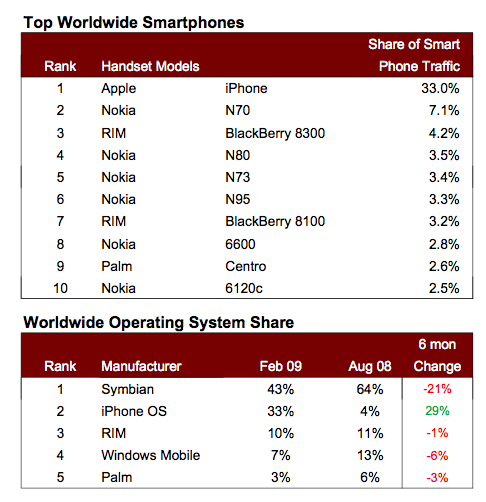Global Smartphone OS Shares: What Do They Tell Us?

AdMob has supplied a steady stream of monthly reports that extrapolate mobile market data from its ad network. Its latest report (February) has a few interesting points about mobile Web traffic shares among smartphone operating systems in the U.S. and globally.
The iPhone holds the lion’s share (and fastest growing share) of mobile Web traffic. In the U.S., this amounts to about 50 percent, up from 10 percent in August 2008. This has a great deal to do with the capabilities of the device combined with the user profiles of iPhone owners.

These numbers aren’t too surprising and are in line with recent data from others including Net Applications. Something that is notable and fairly new here: Andriod is the only other smartphone operating system seeing positive growth in mobile Web traffic.
This is perhaps supportive of the notion that operating systems that more effectively support Web applications through better mobile browsers are more likely see traffic growth (again, not a huge surprise). The much anticipated Palm Pre has much-touted browsing and search capabilities, so it will be interesting to see how it competes on this measure.
Globally, the numbers are similar. Perhaps the biggest takeaway here is that Symbian continues to slip from its longstanding dominant position as the iPhone slowly gains share — now at 33 percent. Here again, Apple is the only mobile OS showing positive Web traffic growth (Android is not yet available outside the U.S.).

So what are the takeaways here? Besides the above point about more user-friendly Web browsing and search capabilities, is this telling of where publishers, media companies and mobile content companies should devote finite development resources?
We’re often asked about how to prioritize mobile app development, given fragmentation of devices and operating systems. For both mobile Web apps and native apps, the “quick answer” could be to look to overall device penetration plus the deltas in the levels of engagement on each of these operating systems.
________
Screen shots care of TechCrunch.
